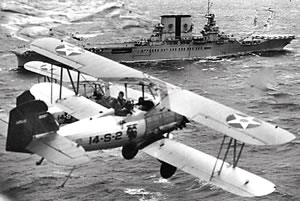Two Who Knew Japan Would Attack

Wednesday - December 07, 2011
| Share
 Del.icio.us
Del.icio.us
|
There are many books claiming a conspiracy to allow Japan to attack Hawaii on Dec. 7, 1941, but 10 investigations came to the conclusion we did not know it was coming.
So most every student of that horrible Sunday morning reasonably asks, “Why didn’t we know?”
One man told us in 1925 he knew it was coming. And one admiral showed us in 1932 how Japanese airplanes could sink our much-vaunted battleships at anchor in Pearl Harbor.
You haven’t heard about any of this during our annual Pearl Harbor newspaper and TV story-fests, have you?
The man who first told us was the British spy and Pacific naval strategy expert Hector Bywater. He wrote The Great Pacific War, saying Japan would build ships and lots of planes and submarines and plan a long, island-hopping naval war because of our Pacific Navy’s long-distance refueling weakness.
He said Japan’s navy would hit Hawaii, Guam, Wake Island and Midway then the West Coast, if we didn’t allow them to keep their conquests, including Manchuria.
He wrote that Japan would hit us with torpedo-bearing planes. Our Navy scoffed and said Pearl was too shallow for torpedoes and, anyway, the battleships would be gone to sea at the first hint of an approaching enemy fleet. Our shore guns at Diamond Head would blow them out of the water.
Then Assistant Navy Secretary Franklin Roosevelt read the book and said Japan and the U.S. would merely deadlock in naval warfare far away from Guam, Wake, Midway and Hawaii. Bywater disagreed. He said we were under-estimating Japan’s navy just as everyone did in the Russo-Japanese war of 1904-05, which Japan won.

Bywater died 16 months before the Pearl Harbor attack. His death was said to be a heart attack, although some think the Japanese killed him because he knew too much. His scenario was nearly right on the money.
Rear Adm. Harry Yarnell had read Bywater’s book and decided to show him right by attacking Pearl Harbor on Feb. 7, 1932.
That’s right, 1932. He quietly took the aircraft carriers Lexington and Saratoga minus escort ships out of San Diego on a war games exercise and headed to Hawaii under radio silence in a storm to mask them from radar and launched his planes from far at sea. And since our Pearl battleship fleet didn’t hear or see anything, it stayed moored pretty much as it would be Dec. 7, 1941. Yarnell attacked on a Sunday morning, just as the Japanese would do later.
His carrier planes dropped flares and bags of flour on the totally surprised Pearl and Hickam forces. The war games referees ruled that Yarnell had sunk every ship at Pearl and destroyed every parked airplane at Hickam.
Did anybody listen? Nope.
The Navy insisted that in real war, the battleships would have gone to sea and destroyed Japan’s carriers.
Roosevelt ordered up 12 more battleships but only four carriers just one of them to be assigned to the Pacific.
Japan got word of this whole Yarnell exercise through spies here and quite a complete report in The New York Times. It did not let the obvious go to waste.
A 1936 Japan War College record recovered in later years shows this entry: “In case the enemy’s main fleet is berthed at Pearl Harbor, the idea should be to open hostilities by surprise attack from the air.”
E-mail this story | Print this page | Comments (0) | Archive | RSS Comments (0) |
Most Recent Comment(s):













